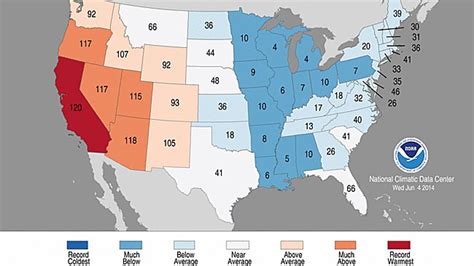California is a state located in the western United States, stretching from the Mexican border to the Oregon border. California is the third largest state in the US, and is home to many of the country’s most populous cities. California is known for its mild climate, with temperatures rarely dipping below freezing and often reaching triple digits in its hottest areas.
With its long summers and warm winters, California is often thought of as one of the hottest states in the country. The average temperature in the state varies from around 50 degrees in the winter months to 90 degrees in the summer months. The hottest areas of the state tend to be in the central and southern regions, with temperatures often rising to 100 degrees or more in the summer.
However, despite its hot temperatures, California is not actually the hottest state in the US. That honor belongs to Florida, which has an average temperature of around 75 degrees year-round. California also has milder temperatures than some of its surrounding states, like Arizona and Nevada. In fact, California has an average temperature that is only 1 degree hotter than the US average.
While California might not be the hottest state in the US, it is still a great place to be in the summer. The mild temperatures and long days make it a great place to enjoy the outdoors and take part in a variety of activities. From the beaches to the mountains, California has plenty of things to do in the summer months.
California’s Record-Breaking Heat Wave
California is a place of extremes, with the scorching heat of the Mojave Desert and the icy chill of the Sierra Nevadas. And recently, the state has been experiencing record-breaking temperatures, as a heat wave swept through the area. The heat peaked on June 27th, with the temperature reaching 117°F in the city of Woodland Hills, which is the hottest temperature ever recorded in the area.
The high temperatures weren’t exclusive to the city, as the whole state was affected. In Los Angeles, the temperature hit 110°F, while in Death Valley, it reached 130°F. Even the coast wasn’t immune to the heat, with San Francisco registering 91°F – the highest temperature since August 2017.
The heat wave is part of a larger climate change pattern, as record temperatures are being set all over the world. In Europe, temperatures reached all-time highs in France and the Netherlands. And the United States is no stranger to this phenomenon, as the country has seen record-breaking temperatures in California, Texas, and New Mexico.
The heatwave caused a number of issues for the state, including increased electricity demand due to the use of air conditioning, to prevent homes from becoming unbearably hot. This caused a number of power outages, as the grid struggled to keep up with the increased demand.
The record-breaking heat wave in California highlights the need to take action on climate change. The state is no stranger to extreme weather, and these record temperatures are a sign that more needs to be done to protect the environment.
| City | Highest Temperature (°F) |
|---|---|
| Woodland Hills | 117°F |
| Los Angeles | 110°F |
| Death Valley | 130°F |
| San Francisco | 91°F |
Exploring the Reasons for California’s Scorching Temperature
California is one of the hottest states in the US. In this article, we’ll explore the reasons for California’s scorching temperature.
California is geographically located between the Pacific Ocean and the Sierra Nevada Mountain Range, and it is one of the most geologically active states in the US. This means that there is an abundance of seismic and volcanic activity taking place, which can cause the temperatures to rise. Additionally, the temperatures in California are impacted by the El Niño and La Niña cycles, which are fluctuations in the ocean temperatures that can cause extreme weather events.
The geography of California also plays a role in its hot temperatures. California is the second largest state by area, and it is composed of deserts, mountains, and valleys. These geographical features can cause a “heat island effect”, where the temperature of an area is higher than the surrounding area due to its location. In addition, California’s population is one of the largest in the US, which can contribute to the heat.
Another factor that contributes to California’s scorching temperatures is the presence of a warm ocean current that comes from the south. This warm current can cause the temperatures along the coast to be higher than in the inland areas of the state. The warm air that rises from this ocean current can also create an inversion layer, which traps the hot air in the atmosphere and prevents it from dissipating.
Finally, the climate of California is primarily dry and the air is often very still. This lack of wind can cause the heat to remain trapped in the atmosphere, leading to higher than average temperatures.
In summary, there are many factors that contribute to California’s scorching temperature, including its geography, population, and climate. With these factors combined, it is no wonder that California is one of the hottest states in the US.
 Road Topic Tourism & Travel
Road Topic Tourism & Travel




